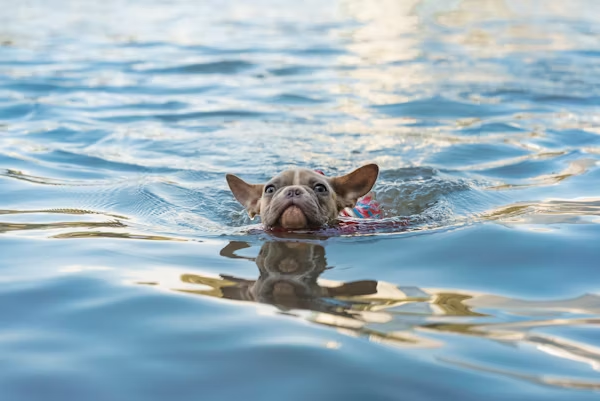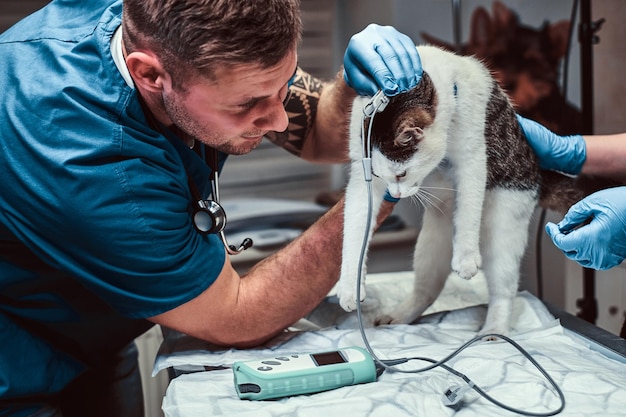Boating With Dogs: The Complete Safety Guide | Sandy Paws Animal Hospital


The Complete Guide to Boating With Dogs
Whether you’re sailing the bay or cruising on a freshwater lake, taking your dog along for a boating trip can make the day even better. But boating with dogs isn’t as simple as clipping on a leash and hopping aboard. At Sandy Paws Animal Hospital, we want to help you make the experience safe, fun, and stress-free for both you and your pup. Here’s everything you need to know before hitting the water.
Start With Basic Training and Familiarization
Before your dog ever sets paw on a boat, make sure they’re comfortable with basic obedience commands like “sit,” “stay,” and “come.” You’ll also want to gradually introduce them to the boat while it’s docked. Let them sniff around, get used to the movement underfoot, and explore the deck on leash. Short, stationary sessions will help your dog acclimate without feeling overwhelmed.
Invest in a Canine Life Jacket
Even strong swimmers can struggle in deep or rough waters. A high-quality dog life vest is non-negotiable when boating. Choose one with a snug but comfortable fit, a sturdy handle for lifting your dog out of the water, and reflective strips for visibility. Make sure your dog practices wearing the vest on land before heading out on the water.
Hydration and Shade Are Non-Negotiable
Dogs can easily overheat in the sun, especially on a reflective water surface. Always bring fresh water and a collapsible bowl, and make sure your dog has access to shade on the boat. A light canopy or an umbrella can go a long way in preventing heatstroke.
Protect Their Paws and Skin
Boat decks can get extremely hot and may burn your dog’s paw pads. Provide a mat or towel for them to lie on, and consider dog-safe sunscreen for areas with little fur—like noses and bellies. Avoid midday boating when the sun is strongest if possible.
Designate a Relief Area
Bathroom breaks are often the biggest challenge when boating with dogs. Consider training your dog to use a patch of artificial turf or a designated potty pad onboard. Line the area with puppy pads for easy cleanup, and bring waste bags to dispose of everything properly.
Plan for Emergencies
Pack a pet-specific first aid kit that includes items like antiseptic wipes, gauze, tweezers, and motion sickness remedies (approved by your veterinarian). Know the nearest emergency vet clinics along your boating route. If your dog is prone to anxiety or motion sickness, speak with your veterinarian about possible solutions before your trip.
Secure Your Dog During Transit
When the boat is in motion, your dog should be on a leash or secured in a safe area to prevent slips, falls, or going overboard. If you’re anchoring or docking, double-check that your dog can’t bolt onto the dock or chase after wildlife.
Watch the Water Conditions
Wind, waves, and wake can be disorienting or even dangerous for pets. If you wouldn’t want a small child on the water due to conditions, it’s best to leave your dog ashore that day. Calm, sunny days with minimal boat traffic are ideal for first-time canine passengers.
Enjoy Responsibly
Some dogs take to boating naturally, while others may never enjoy it. Respect your dog’s personality and comfort level. Start with short outings and increase the duration as they grow more confident. Don’t forget to take breaks for play, petting, and photo ops—after all, this is meant to be fun.
Boating with dogs can be a safe and rewarding experience if you take the right precautions. Make safety your top priority, bring plenty of supplies, and stay observant of your dog’s needs. If you have any health or behavior concerns before your trip, schedule a check-up with our veterinary team at Sandy Paws Animal Hospital.
Learn more about us and the services we offer by calling (904) 278-0600 or give us a visit at 550 Wells Road, Suite 17, Orange Park, FL 32073.



















